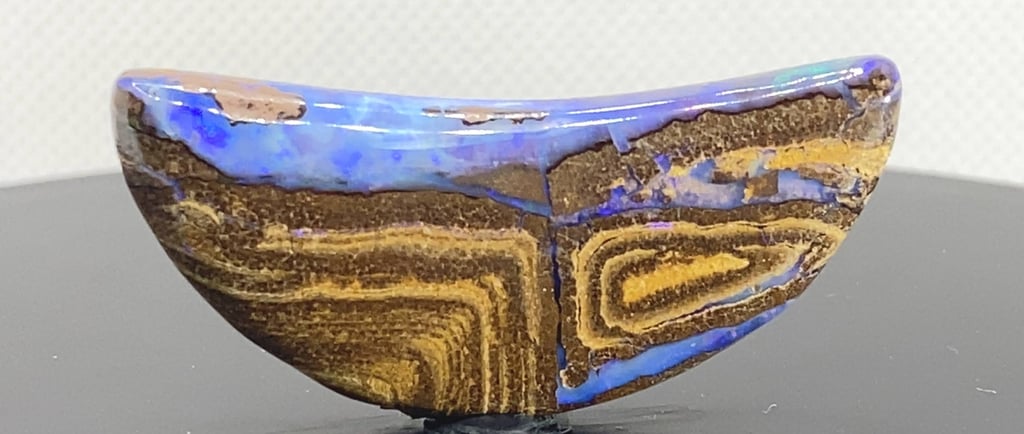NATURALLY BRILLIANT. JUST LIKE YOU.
How is Boulder Opal formed ?
Brief explanation of how Queensland Boulder Opal is formed.
OPAL FORMATION
5/8/20241 min read


Boulder opal is one of Australia’s most breath-taking gemstones, shaped by nature over millions of years. It forms when silica-rich water seeps into cracks and cavities within ironstone boulders. As the water evaporates, it leaves behind tiny layers of silica, gradually building up over time to create opal.
Unlike other opals, boulder opal doesn’t separate from its host rock—it remains fused to the ironstone, creating striking contrasts between deep earthy tones and vibrant flashes of colour. This unique formation process gives boulder opals their incredible strength and distinctive appearance.
The opalisation process can take millions of years, depending on environmental conditions. Over time, pressure, temperature shifts, and mineral interactions shape each opal’s character, resulting in the rich blues, fiery reds, and mesmerising greens that make boulder opal so sought after.
Most boulder opals are found in Queensland, Australia, hidden within rugged landscapes. Miners carefully extract them, often revealing swirling patterns and brilliant colours that have been locked within the stone for millennia.
Boulder opal is not just a gem—it’s a snapshot of geological history, a piece of the earth’s transformation frozen in time. Its combination of natural durability and striking beauty makes it one of the most fascinating opal types in the world.
Resilience
Discover unique opals that inspire transformation and calm.
Energy
Radiance
starpathopals@gmail.com
PO Box 169, Ferny Hills DC Qld 4055 Australia
© 2025. All rights reserved.
We’re not big on social media—we’re too busy chasing opals in the great outdoors! Hopefully, you’re out exploring and doing what you love too - IRL.